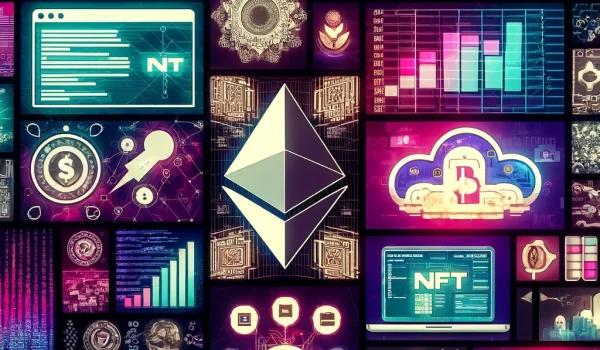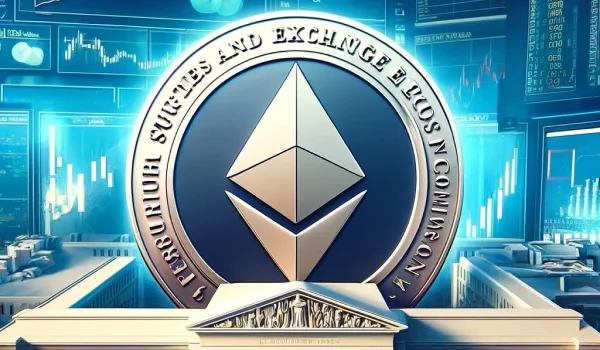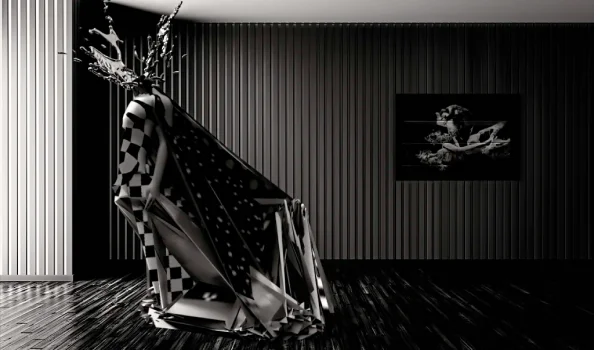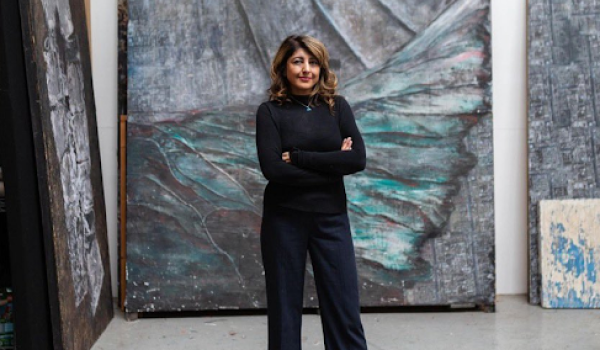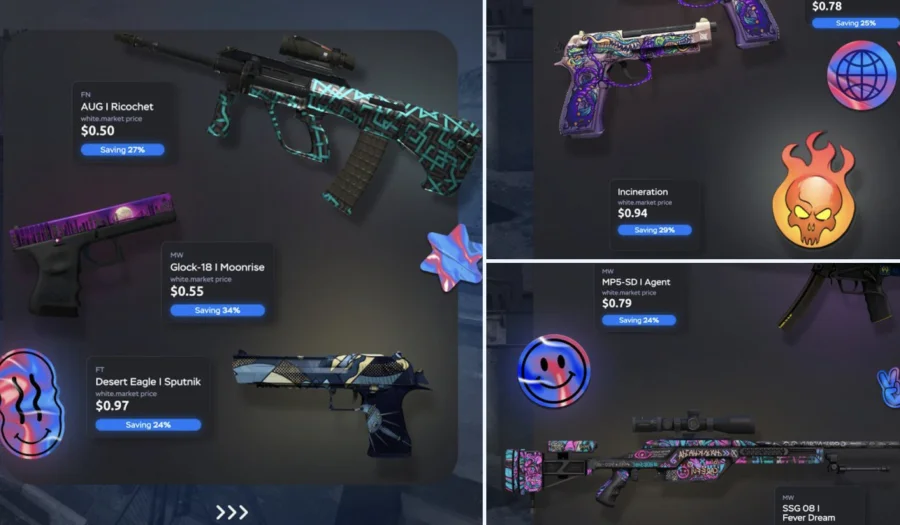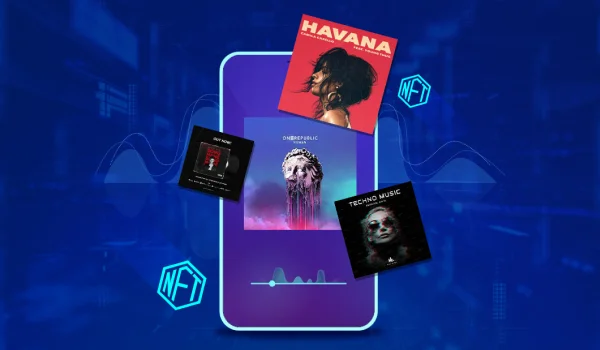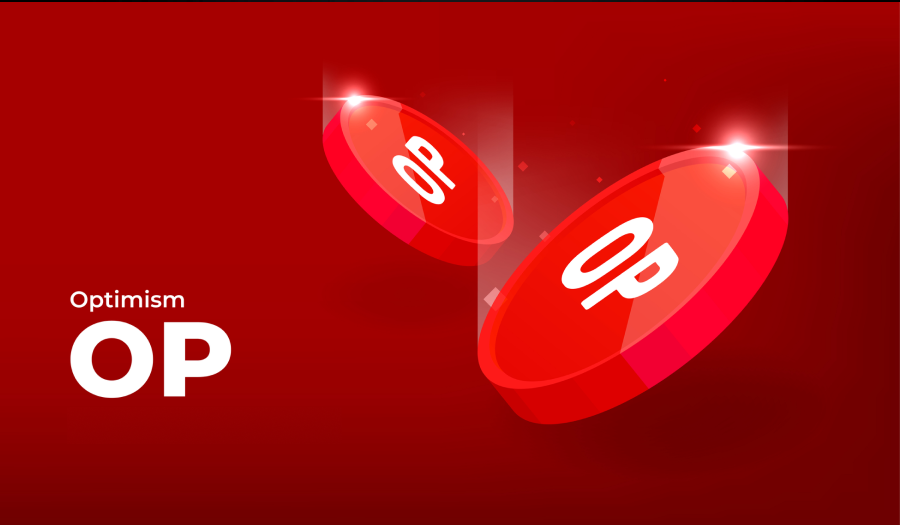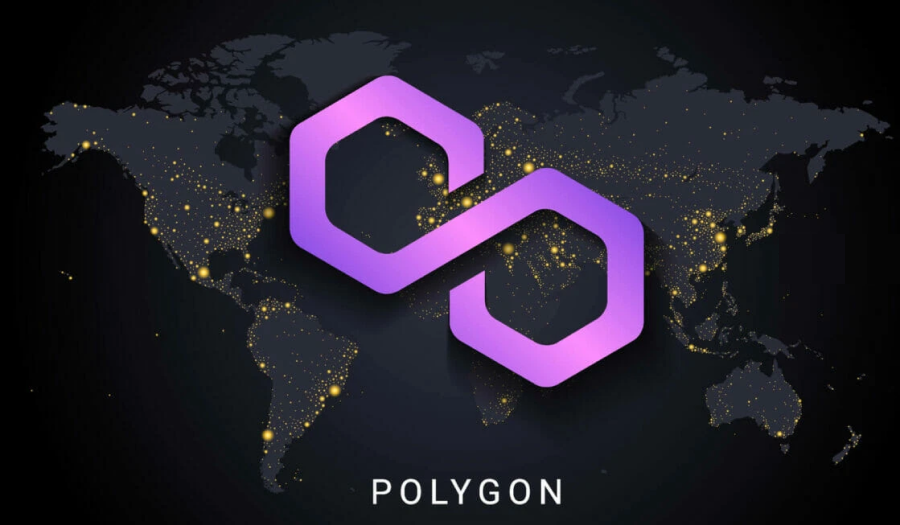We provide a comprehensive guide to formal NFT terms from A to Z, as well as an overview of NFT slang, abbreviations, intentional misspellings, and Twitter terminology. This will give you a complete understanding of the language used about NFTs and crypto.
1:1 or 1/1
A one-of-one (1/1 or 1:1) NFT is defined as a wholly unique single edition. The term "unique" means that there will never be another edition of that specific NFT.
10k project
A 10k project refers to an NFT collection that includes around 10,000 avatars. The CryptoPunks collection introduced the concept of this form of NFT back in 2017, and several similar collections have appeared since then. Although not all of them have exactly 10,000 avatars, the phrase "10k project" is used to designate this type of NFT collection rather than the actual number of avatars it contains.
Airdrop
Airdrop refers to the free delivery of NFTs or tokens to users' wallets. Projects typically airdrop NFTs to promote their collection or to thank someone for their loyalty, participation in competitions, and so on.
Alpha
Knowing important insider information. "I work at OpenSea, so I know what the new trend will be next month," for example.
Ape (into something) verb
The phrase "ape into" refers to making an irresponsible purchase without conducting proper research, often driven by the fear of missing out (FOMO).
Asset
A digital collectible or token can also be referred to as a one-of-a-kind digital item or a distinct digital asset.
Bagner
The word I'm referring to means "excellent" and originated from the term "banger." It is commonly used to compliment various things like artwork, opinions, or tweets. However, it's mainly used to appreciate a good joke. Interestingly, a Twitter user's misspelling of "banger" led to the creation of an entire NFT collection with the same name.
Bearish
When you think that a market or asset is going to decrease in value. For example, “I’m feeling bearish about the PFP NFTs right now”.
Bitcoin
The main cryptocurrency that is the most popular now.
Blockchain
A blockchain is a digital database that securely stores information by distributing it across multiple devices (nodes) in a global computer network. Instead of relying on a single centralized server, a decentralized server manages the information. This technology enables an unchangeable and transparent record of data that is publicly available. Blockchains are commonly used in cryptocurrency and NFT systems due to these features.
Blue chip
Which projects or tokens are considered the most stable? An example of a reputable NFT project is CryptoPunks developed by Larva Labs.
Bot
Bots are automated software or scripts designed to perform certain actions. They are often used to automatically execute trades, initiate identity verification processes, and quickly purchase cheap NFTs as soon as they become available.
Bozo
People in the NFT community are using the term "bozo" in a very broad sense. If someone gets scammed, chooses the wrong NFT to buy, or doesn't have a ledger, they're all considered "bozos". Basically, "bozo" means the same thing it always has, but it's being used more frequently by those in the NFT scene.
Bridge
This is a description of a service that allows for the transfer of tokens and other data between different blockchain networks in exchange for a fee.
BSC
The term "Binance Smart Chain" is abbreviated as BSC.
BTC
The abbreviation for Bitcoin is BTC.
BTFD
‘Buy the f'ing dip.’ If you notice people selling and rushing around when the price of a cryptocurrency drops significantly, it is an opportunity to buy.
Bullish
The term used when traders, investors, and community members anticipate a token or asset's value to increase shortly is known as bullish.
Burn / Burning
Essentially, by "burning" an NFT, you are destroying it. This process requires you to spend your cryptocurrency (ETH or another one) but it can also have a deflationary effect which could raise the value of the NFT or currency. Additionally, some projects may request that you burn an NFT to get something else in return.
CC0 – Creative Commons 0
The message explains that "cc0" stands for Creative Commons Zero. It is a term used when the owners of an intellectual property give up all their copyrights to the public domain. When it comes to NFTs, cc0 refers to NFTs with no IP rights. This means that anyone can reproduce a cc0 NFT without legal consequences. Even non-holders can use it to create and sell commercial goods without needing to credit the original creator.
Cold Wallet
A cold wallet is a secure type of crypto wallet used for storing cryptocurrencies and non-fungible tokens offline. Popular cold wallet companies include Ledger and Trezor, which are different than hot wallets like Metamask which are not offline.
Collectibles
Collectibles are tokens/items/NFTs that are unique and have varying levels of rarity, which makes them special and sought-after items to collect.
Community Designated Sellers (CDS)
Some individuals create wallet addresses with designated purposes and fees for those interested in selling their assets.
Crypto
Cryptocurrencies are often referred to as "crypto."
Cryptocurrency
A type of digital currency that ensures the safety of financial transactions and the creation of new coins using cryptography. Examples of such currencies include Bitcoin and Ethereum.
Crypto Twitter (CT)
There is a subculture consisting of developers, tech founders, economists, influencers, and speculators who often use Twitter to discuss topics such as cryptocurrency, blockchain, decentralization, and crypto scams.
Crypto wallets
Crypto wallets or wallets are used to store, transfer, and manage crypto assets such as cryptocurrencies and NFTs. There are two main types of crypto wallets: hot and cold.
Decentralized apps (dApps)
Decentralized Applications, also known as dApps, are applications that operate on decentralized networks such as the Ethereum or Solana blockchain. They rely on smart contracts and are known for their ability to offer privacy and scalability.
Decentralized Autonomous Organization (DAO)
Decentralized Autonomous Organizations (DAOs) are entities that operate on the blockchain without a company hierarchy. Their governance is determined by smart contracts that establish rules and regulations and make significant decisions based on members' votes. This means that DAOs function independently and without any central leadership, unlike traditional companies.
Decentralized exchanges (DEX)
Decentralized exchanges (DEX) enable direct transactions between peers without the need for a third party.
Decentralized finance (DeFi)
The main idea behind DeFi is to create a decentralized financial system that is open, transparent, and accessible to anyone with an internet connection. DeFi aims to provide financial services such as lending, borrowing, trading, and investing, without relying on intermediaries like banks or financial institutions. By leveraging blockchain technology and smart contracts, DeFi applications can provide users with greater financial freedom, privacy, and control over their assets.
Degen
The term "degens" refers to a specific group of NFT traders who typically identify themselves as such. These individuals tend to invest in new projects without conducting thorough research and are often driven by fear of missing out (FOMO).
Delist
Withdrawing the offer to sell an NFT from an open marketplace.
Devs
"Developers" is commonly abbreviated as "devs".
Diamond Hands
A person who practices HODLing refers to someone who retains a particular asset despite market fluctuations, unfavorable news, and negative market sentiment.
Discord
The group chat platform was first designed for gamers, but it has now transformed into a community platform that includes a range of communities, specifically NFT projects.
Dutch Auction
In a Dutch auction, the initial price is set high and gradually lowered over time. This type of auction is commonly used for NFTs on many marketplaces.
Doxxed / Doxed
When the identity of a team member, developer, or creator of an NFT is public and verifiable, it signifies confidence and transparency in the NFT market. NFT collectors can be assured that they won't be scammed by an anonymous creator when the team behind the project is doxed.
Drop
There is an event where users can get free tokens/NFTs by holding onto specific types of assets.
DYOR
"DYOR" stands for "do your research," a commonly used term in the NFT space due to the abundance of scams and fraudulent activities. It's essential to avoid making hasty investment decisions based solely on the recommendations of NFT influencers, as the fear of missing out (FOMO) can lead to mistakes. Always keep the golden rule in mind and take the time to do your research before investing.
ETH
Abbreviation for Ethereum.
Ethereum
Ethereum is a cryptocurrency also referred to as ETH, that enables the creation of decentralized applications (dApps) and smart contracts and is commonly used for purchasing non-fungible tokens (NFTs).
Etherscan
Explore Ethereum's blockchain and track transactions, balances, and digital collectible values using this platform, which also includes analytics.
ENS (.eth)
Ethereum Name Service is a service that sells .eth domains. These domains can shorten your long Ethereum wallet address, making it easier for others to identify and send ETH/NFTs to your wallet.
ERC-20 token
A token standard that is compatible with the Ethereum blockchain, and it is used for fungible currencies such as USDT, MANA, and MATIC.
ERC-721 token ( and ERC-721A)
An Ethereum blockchain non-fungible token created using the ERC-721 contract standard is unique. Previously, most avatar pfp projects on Ethereum used this standard until the ERC-721A contract standard was introduced with the Azuki NFT mint. The ERC-721A contract standard optimizes gas fees when minting large generative NFT collections, which most collections now prefer as it saves them money.
ERC-1155 token
A standard for tokens that are semi-fungible, meaning they are NFTs that can exist as duplicates of the same digital asset without individual token IDs. These tokens are often used for metaverse wearables, game items, and art editions.
Farm
The term commonly used in gaming is "grinding/farm" where players earn rewards within the game by investing their time and effort.
Fiat
Currencies issued by governments, such as USD, Euro, and GBP, are not tied to the value of commodities like gold or silver.
Flip
If you flip something, such as an NFT or token, you quickly buy and sell it to make a speedy profit.
Floor / Floor Price
The 'floor' or 'floor price' refers to the minimum price at which you can purchase an NFT from the collection on the secondary market.
FOMO
FOMO stands for Fear of Missing Out. Although it is not a term exclusive to the world of cryptocurrency, this is a common sentiment among NFT traders. The term is frequently used about NFTs because there is no hype surrounding them without the presence of FOMO.
Fractional ownership
The NFT allows for partial ownership rights where sellers can sell a portion of the work and buyers can buy a percentage based on their budget.
Fren
The term "fren" is a deliberate misspelling of "friend" used by the NFT community. They often make fun of themselves for selling their NFTs too quickly and use funny spellings like "fren" to add humor. If you were looking for serious NFT terminology, this may not be the best resource to use.
FUD
In the world of cryptocurrency, the term "FUD" means Fear, Uncertainty, and Doubt. This term is used to refer to misleading or negative information about a particular project or token.
Fungibility
Replaceability refers to the capability of a good or asset to be exchanged with other goods or assets of the same kind. On the other hand, something that is non-fungible, such as a piece of art, is unique and can't be replaced by anything else.
Fungible Tokens (FT)
Tokens that can be exchanged and traded, such as ETH and BTC.
GameFi
"Play-to-earn" (P2E) refers to decentralized applications (dapps) that offer economic incentives for players who perform certain in-game tasks like winning battles, mining resources, or growing digital crops. These incentives often come in the form of tokens or NFTs.
Gas fee
The NFT Gas fee refers to the cost users must pay to conduct transactions on the blockchain. The fee is collected by the blockchain miners who authenticate transactions on the blockchain. The amount of gas fees vary extensively based on several factors, such as network activity.
Gas Wars
During a project launch or high-value sales, many people compete to obtain a particular NFT, resulting in NFT gas wars. This high demand causes network congestion leading to an increase in Ethereum transaction fees.
Generative Art
Some NFTs use on-chain elements like a transaction hash to determine their art. This means that each NFT will have unique traits, similar to an ID number or barcode. As a result, these NFTs have randomly generated, or generative art.
GM/GN
To put it simply, GM means good morning and GN means good night. These terms are commonly used by members of the NFT community to greet each other and show camaraderie. For instance, someone might say "GM. Let's start the week off right!"
GMI/WAGMI
WAGMI is a shortened version of the phrase "We're all going to make it," frequently used by NFT investors to express their positivity regarding their held NFTs. When significant good news is announced, community members often respond by shouting "WAGMI/WGMI."
Governance Token
A governance token is a type of cryptocurrency coin that gives voting power to members of a DAO. In essence, each coin represents a vote. The distribution of votes among members and the amount of voting power each member has will vary.
GPU
A GPU is a processor required for mining specific cryptocurrencies, like Ethereum. "GPU" stands for the graphics processing unit.
Grail
An NFT can be classified as a Grail if it has either extremely rare traits, a unique combination of traits, or no traits at all. People consider these NFTs as "grails" because they are the most desired out of the entire collection.
Gwei
Gwei is a term used to refer to a denomination of the cryptocurrency ether (ETH). It is also known as nanoether and represents the ninth power of fractional ETH, meaning that 1 Gwei is equivalent to 0.000000001 ETH. To put it simply, Gwei is the gas price needed to complete a transaction or a contract execution on the blockchain.
Hashmasks
The Hashmasks are digital paintings created by a team of 70 artists who are spread around the world and are managed by Suum Cuique Labs. These paintings allow people to have control over the art. As per the Hashmasks Manifesto, people who own the Hashmasks can suggest names for them through the Name Change Token (NCT) to help complete the artwork.
Hashrate
Hashrate refers to the computational power of a mining device or a mining network in the context of cryptocurrency mining. It is a measure of how many calculations a device or network can perform per second to solve a cryptographic puzzle and validate transactions on the blockchain. The hashrate is usually expressed in hashes per second (H/s), kilohashes per second (KH/s), megahashes per second (MH/s), gigahashes per second (GH/s), terahashes per second (TH/s), or even petahashes per second (PH/s), depending on the scale of the mining operation. The higher the hashrate, the more likely a miner or a mining pool is to find the next block and receive the block reward.
HODL
The term "HODL" originally meant "Hold On for Dear Life" among cryptocurrency veterans who were determined to keep their assets, regardless of market fluctuations. In the world of NFTs, the term has taken on a slightly different meaning, often used simply as a misspelling of "hold". Nonetheless, it remains a popular term among NFT enthusiasts.
Hot Wallet
Hot wallets, such as Metamask, Phantom, and Wallet Connect, are software wallets that store cryptocurrency assets online. However, it's important to note that hot wallets are less secure than cold wallets and are more susceptible to attacks.
ICO
ICO stands for Initial Coin Offering. It's an unregulated way of raising funds where the team behind a new cryptocurrency project sells digital assets to early supporters.
IDO
IDO stands for Initial Dex Offering. This is a fundraising method for upcoming crypto or NFT projects where new NFTs or tokens are launched through a decentralized liquidity exchange.
IGO
Initial Game Offering (IGO) is an acronym that stands for a funding model similar to an ICO. IGO allows participants to support the early development of a game while gaining early access to in-game assets, usually non-fungible tokens (NFTs).
InterPlanetary File System or IPFS
Storing NFT data on an IPFS address is better than storing it on an HTTP gateway URL because the latter is associated with a specific provider, while IPFS allows users to locate the content as long as it is being hosted by someone on the network.
KYC
KYC is an acronym for Know Your Customer, which is a standard procedure where companies authenticate the identity of their users by asking for a range of personal information (such as government-issued ID, residential address, contact number, and selfie) to comply with KYC regulations.
Liquidity
A coin's liquidity refers to how easily it can be converted into cash or other types of coins.
Liquidity pool
A pool of cryptocurrencies or tokens, collected from multiple sources, that is stored in a smart contract to enable asset trading on a decentralized exchange (DEX).
LFG
LFG is a term in NFT terminology that stands for Let's F****g Go. People in the community use this to show their enthusiasm for something or to ramp up excitement for a person or project.
Metadata
The metadata of an NFT contains all the essential and unique data that defines that particular NFT. It includes all the information attached to it, such as images, properties, files, and more. In certain cases, the metadata may be frozen by a smart contract owner, which ensures that the image and properties will never be altered.
Metamask (MM)
MetaMask is a popular browser wallet that is free to use and also has a mobile app. It enables users to store and exchange various cryptocurrencies, interact with the Ethereum blockchain, and access other decentralized applications.
Metaverse
The Metaverse is a virtual world that allows users to explore as avatars, attend concerts, shop, play games, attend meetings, and do almost everything they would do in the real world. It's important to note that the term "Metaverse" does not necessarily imply the use of Web3 technology. The Metaverse can include both web2 and web3 virtual worlds and experiences.
Miner
Someone who uses their GPU to mine tokens on a blockchain network.
Mining
In cryptocurrencies that use the proof-of-work (PoW) method, users compete to solve cryptographic problems to confirm and include new transactions in the blockchain. The first person to solve the problem is rewarded with newly created tokens and can add the current block to the blockchain.
Mint or Minting
Minting in NFTs refers to the act of publishing an NFT on the blockchain. After minting, the NFT becomes accessible to the public for viewing, buying, selling, or trading. It's important to note that minting is permanent and cannot be undone.
Mods
The role of moderators on Twitter, Discord, or Reddit channels is to make sure the community experience is healthy, active, and informative.
Moon
The term "going to the moon" or "mooning" means that there has been a significant increase in the value of an asset.
Multisig
A multi-sig wallet is a type of wallet that needs more than one signature to conduct a transaction and transfer funds. This additional security feature is commonly found in DAOs.
NFT
An NFT, short for "Non-Fungible Token," is a digital certificate on a blockchain that establishes ownership and authenticity of a digital or physical asset. NFTs are versatile and can be used for a wide range of things, including music, art, real estate, tickets, videos, and games.
NFT marketplace
An NFT marketplace is essentially a platform where you can purchase, sell, view, and trade NFTs. The majority of popular marketplaces are based on the Ethereum and Solana blockchains. OpenSea, LooksRare, Magic Eden, and Solsea are examples of such marketplaces.
NGMI
NGMI means "Not gonna make it", which is the opposite of WAGMI. This term can be used to criticize traders you don't like on Twitter, or even to explain to someone why you bought another NFT.
Non-custodial wallet
A non-custodial wallet provides you with exclusive control over your private keys, while a custodial wallet grants control of your private keys to another party, which is usually a web-based exchange. Metamask, Ledger Nano X, and Trezor One are some of the most well-known non-custodial wallets.
Off-chain metadata
Metadata is not stored on the blockchain but elsewhere.
On-chain metadata
Metadata that is included in a smart contract directly.
Open editions
Each edition of an NFT is a copy of the same digital artwork. Open Editions refer to editions that have an unlimited number of copies available for purchase. Sometimes, artists may set a limited time frame for Open Editions to maintain some level of exclusivity. However, some projects may allow unlimited purchases of Open Editions.
OpenSea
The primary use of Opensea is for secondary sales of NFTs, and it is considered the top marketplace for NFTs on Ethereum.
Oracle
The purpose of an oracle is to connect smart contracts on blockchains with data from external sources. It acts as a bridge between the blockchain and information that is stored outside of it.
OS
Short for OpenSea.
Paper hands
The opposite of ‘diamond hands’. The term ‘paper hands’ is used to describe someone who sold something, typically an NFT, for a price that is considered to be lower than its actual worth.
Peer To Peer (P2P)
Person-to-person transactions refer to transactions that occur directly between two individuals without involving any intermediary.
PFP project
A PFP or profile picture NFT refers to a type of NFT that is meant to be used as a social media profile picture, primarily on Twitter. Well-known examples of such NFTs include Bored Ape Yacht Club, CryptoPunks, and Doodles.
Play to Earn (P2E)
The games operate on blockchain and offer tradeable tokens and in-game rewards for players.
Polygon
Polygon (formerly known as Matic Network) is a Layer 2 scaling solution for Ethereum that aims to improve the speed and efficiency of transactions on the Ethereum network. It is a sidechain that is interoperable with Ethereum, which means that it allows developers to build and run decentralized applications (dApps) on Polygon while enjoying the security and liquidity of the Ethereum ecosystem. Polygon uses a Proof of Stake (PoS) consensus mechanism and offers low fees, fast confirmations, and a user-friendly experience for both developers and end-users. It has gained popularity in the DeFi space due to its high throughput and low gas fees.
Pre-mine
Pre-minting refers to the process of generating a fixed number of tokens before their release to the public.
Presale
Companies or project developers frequently use initial sales (like ICO, IDO, and IGO) to raise capital by allowing investors and early adopters to purchase new tokens/NFTs using ETH (or other altcoins).
Private key
In cryptography, a private key is a variable that works with an algorithm to code and decode data. When it comes to cryptocurrency, private keys are utilized to validate transactions and prove that a blockchain address belongs to the owner.
Probably Nothing
The phrase "usually something" is often used to excite people, but it may not have any real substance. Although it has become overused in 2022, some veterans in the cryptocurrency industry may still utilize it.
Proof of Stake (PoS)
PoS is a method used by crypto projects to validate transactions. It works by rewarding holders of tokens when they hold them for a specific period. Similar to mining, this method also requires computing power and electricity consumption.
Proof of Work (PoW)
In PoW, miners solve hashing problems to add new transactions to the blockchain, which makes it hard for hackers to break into the network. To compromise the network, hackers would need more than 51% of the computing power that exists globally.
Public key
Similar to private keys, it is a cryptographic key that gives others viewing access to your wallet or NFTs; however, unlike private keys, it does not need to be kept secret.
Pump and dump
A pump is a tactic in which an individual or a group of influential investors, known as 'whales', purchase or persuade others to buy a large number of a particular cryptocurrency or NFT. The purpose of this is to increase the price of the asset dramatically. Once the price reaches its peak, these investors quickly sell their holdings at a high price to earn a significant profit, which ultimately results in a price drop. This can lead to losses for newer or slower investors who purchased the asset at the peak price.
Rarities
Collectibles in digital form and NFTs found in games, PFP, or other projects are often categorized by their rarity, ranging from common to rare, legendary, or mystic. Additionally, each item is assigned a unique edition number, such as #001/100, and has its own distinct IDs and metadata.
Reply Guy
A "reply guy" is someone who only responds to tweets related to NFTs on Twitter. These individuals are considered crucial to the NFT industry. Without them, it's difficult to imagine what the industry would look like.
Reveal
The NFT reveal is an exciting step in the process, especially for generative projects. In this type of project, the artwork is not created until the NFT is minted. During the reveal, the metadata is published, which allows viewers to see the final artwork and the rarity of traits.
Reward pool
P2E games have a reward pool that distributes tokens to players who earn them through gameplay. To keep the reward pool balanced, various features require players to reinvest in the game and refill the pool.
Ring Signature
The given digital transaction can be executed by any user from a group of users who possess the keys. The transaction notifies the sender of its signing but not by whom it was signed. This implies that the funds cannot be utilized unless another signer grants approval as well.
Roadmap
A roadmap for an NFT project is a document outlining its goals, plans, and milestones, both short-term and long-term. This document is crucial for investors in evaluating whether to invest in the project, and a strong roadmap often determines success. However, whether a project can follow through with its roadmap promises is a separate topic. Familiarizing yourself with this term is vital for navigating the NFT industry.
Royalty
When someone buys and then resells an NFT, the creator gets a cut of that second sale. This is known as royalty and it's similar to how musicians receive royalties for their music.
Rug pull / Rugged
A rug pull is a type of scam in which the team behind an NFT project disappears with all the money they have collected from investors. These projects are often heavily promoted, leading many unwitting investors to fall for the scam, only to end up with no NFT and no money. As an aspiring NFT trader, it is important to know about this term and be aware of its implications.
Satoshi
A satoshi is the smallest unit of bitcoin equal to 0.00000001 BTC and named after the pseudonym of the person or persons who created bitcoin, Satoshi Nakamoto.
Secondary market
A secondary market, also known as the aftermarket, is a financial market where investors trade assets with each other instead of directly buying from issuing companies. NFTs can be bought or sold on the secondary market once they are minted. OpenSea and Blur are popular examples of secondary markets.
Seed hash
A 32-byte random value that enables the generation of new public and private keys.
Ser
The word "sirve" is a misspelling that some people use to make the word "sir" sound cuter. However, it's important to be cautious as some people use it to mock authority figures instead of showing respect. While this word is not likely to be added to a regular dictionary, it's a humorous piece of NFT language to be aware of.
Sharding
In the context of NFTs, sharding refers to dividing a single NFT into multiple smaller subsets. This is usually done to enable multiple individuals to collectively purchase an expensive NFT.
Shilling
A marketing strategy is where someone promotes a specific NFT project and urges others to invest in a certain NFT.
Slow or Soft Rug
A "soft rug" is a type of scam where the founders or developers are still somewhat involved in the community, but slowly drain funds without providing any real value. This is an important term to be aware of in the NFT space, as there are many "soft rug pulls" that you should avoid.
Smart contract
A blockchain-based agreement executes itself upon meeting predetermined conditions. Once enforced, it cannot be changed or reversed.
Snapshot
The snapshot is a tool commonly used by NFT creators and P2E games to identify those who qualify for airdrops and early access at a specific time. For example, if you have NFT X in your wallet during the snapshot on January 1st, you will receive NFT Y as a free airdrop the following week.
Solidity
This is a programming language used for creating smart contracts, which is object-oriented and high-level.
Staking
Staking refers to the act of keeping tokens locked in a wallet for a specific period to take part in validating transactions on PoS blockchains. Stakers receive rewards either at regular intervals or after processing a certain number of blocks.
Sweep (the floor)
An influencer's statement of "sweeping the floor" refers to the purchase of a substantial amount of the least expensive NFTs from a collection's secondary market. This action could be arranged by NFT creators, DAOs, or individuals with significant financial resources (whales).
Szn
The term "season" is used to refer to the cycles of the crypto or NFT market.
Tokenomics
Tokenomics is a term that combines "token" and "economics". It refers to the data, quality, and statistics of a token that investors may find interesting.
Tokens
A synonym for digital assets.
Utility-focused NFTs
One example of NFTs with practical applicability is those that offer real-world benefits. For instance, if you possess a Bored Ape NFT, you can gain access to exclusive membership-only perks, such as a collaborative graffiti board.
Utility token
These tokens are used within a particular system or network to access certain functions or perform actions. They are interchangeable and serve a specific purpose.
Vault
A smart contract that escrows collateral and keeps track of the value of the collateral.
Verified contract
A contract that is open to the public and permits users to examine and review its code is known as a verified contract. Such contracts are commonly used for transactions where a higher level of trust is required and can be verified by a third party.
Volatility
This refers to the degree of increase or decrease in the value of an asset over a certain period.
Wallet
The digital wallet enables users to store and manage their cryptocurrency assets.
Wearables
The term 'wearables' should not be confused with 'NFT'. Wearables refer to digital items that can be worn in virtual worlds like metaverse, AR, or VR. Brands like Fabricant design clothes specifically for virtual worlds such as Decentraland and the Sandbox. They also design clothes that can be used in video call platforms like Zoom and Hangouts. In Web3 metaverses, wearable items are NFTs that can be bought, sold, and traded on secondary markets. However, in Web2 metaverses, wearable items are only available in-game and cannot be traded.
Web3
The vision is to create a new version of the internet that operates on a decentralized online system utilizing blockchain technology.
Wen…?
The term 'Wen' means the same as 'When'. It is an inside joke adopted by the crypto community.
Whale
A person with significant capital can influence the market by either buying a significant amount from a particular collection, causing its value to rise, or selling a lot, leading to its decline.
Whitelist
A whitelist is a list of individuals or groups that are granted early access to an NFT drop before it becomes available to the general public. The abbreviation commonly used for a whitelist is "WL."
Whitepaper
The crypto project team has released an official document that provides investors with comprehensive technical information concerning its concept and roadmap.
WLTC
In 2021, "We like the cats" was a popular slogan among fans of Cool Cats. Although it is not used as frequently now, it is worth mentioning in this NFT dictionary. This phrase became well-known due to Farokh covering himself in milk "for the Cats."


 27 mins read
27 mins read